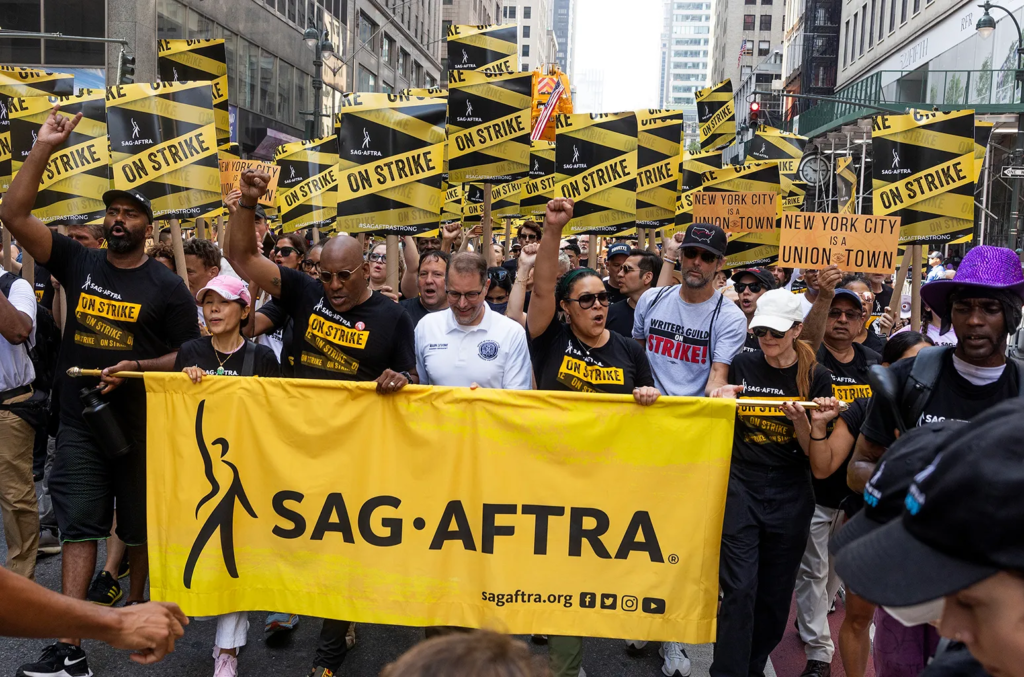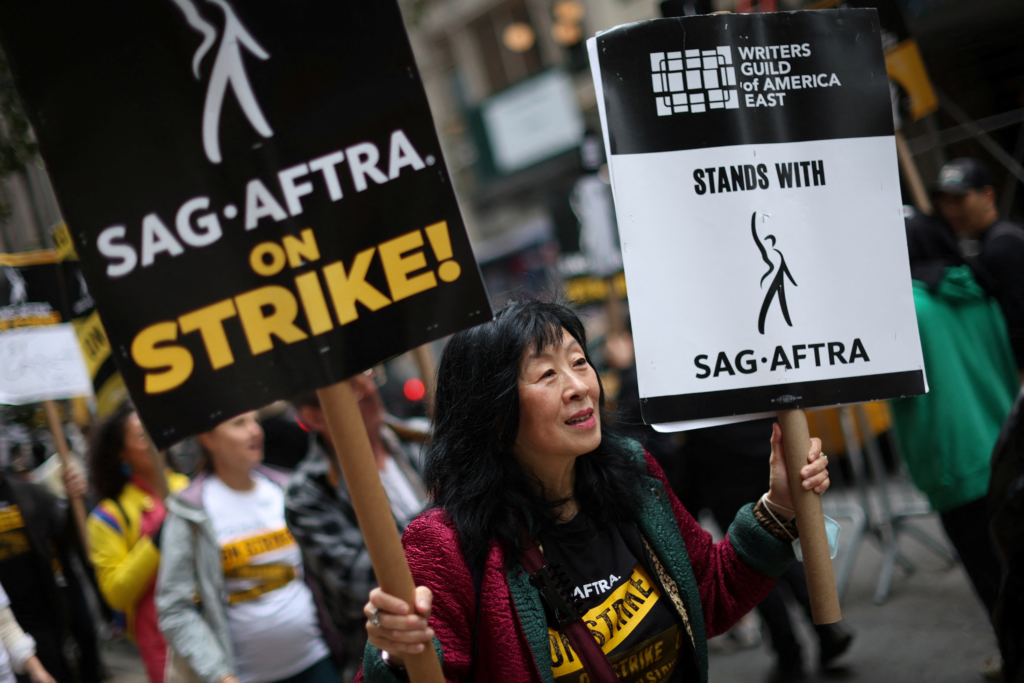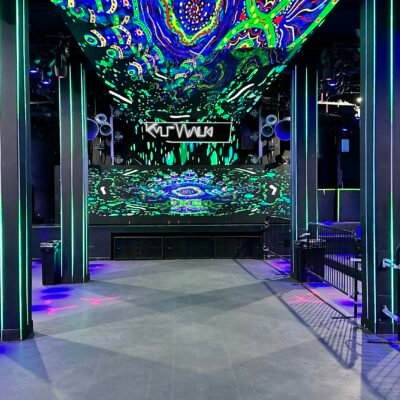Hollywood can breathe a sigh of relief. The Screen Actors Guild‐American Federation of Television and Radio Artists (SAG-AFTRA), which represents over 160,000 actors, voiceover artists, and media professionals, has reached a tentative agreement with major film and TV studios. This breakthrough prevents a potentially massive strike that could have brought the entertainment industry to a halt.
The agreement, announced late Wednesday, follows weeks of intense negotiations with the Alliance of Motion Picture and Television Producers (AMPTP). The new deal comes at a critical time when the industry is still recovering from past disruptions, including the recent writers’ strike and pandemic-related shutdowns.
Read about the previous WGA strike settlement to understand how this deal follows a similar path.
Key Issues at the Heart of the Talks
The union’s demands centered around better pay, improved residuals from streaming content, and protection from artificial intelligence (AI). Over the past decade, the rise of digital platforms has significantly changed how movies and shows are distributed, but many actors argued that compensation structures failed to evolve.

One of the biggest concerns was the use of AI to digitally replicate an actor’s likeness. Union members pushed for clear limits on how AI could be used without consent or fair compensation.
The tentative deal is said to include:
- Increased minimum pay rates
- Stronger AI protections
- Improved health and pension benefits
- Bonuses for streaming performances
According to SAG-AFTRA President Fran Drescher, “We have made significant gains in areas we once thought impossible. This deal prioritizes dignity, fairness, and respect for every member.”
What Happens Next?
Though the deal is “tentative,” it still needs formal approval by union leadership and a member vote. A detailed summary of the agreement will be shared with members in the coming days, followed by a vote to ratify it.
If approved, the deal will last for three years, covering film, TV, and streaming work across all major studios under the AMPTP umbrella.
This agreement is expected to set a new industry standard, just as the Writers Guild of America’s recent settlement created a blueprint for future negotiations.
More about the impact of AI in Hollywood here.
Relief Across the Industry
With major film and TV projects stalled due to strike threats, the news has brought joy to both studios and audiences. Many productions were on hold, fearing delays or cancellations. Popular shows such as Stranger Things, Euphoria, and blockbuster films including the next Avengers movie were at risk.
Studios are now preparing to resume production, pending final deal ratification. Industry experts predict a surge in casting, filming, and content releases over the next few months, restoring financial activity in Los Angeles and beyond.
Voices from the Union
Several actors took to social media and interviews to express cautious optimism.
Actor Mark Ruffalo tweeted, “If this deal protects us from being digitally cloned and discarded, it’s a win for everyone who loves storytelling.”
You can explore how streaming changed actor compensation for more context.
Broader Industry Implications
This agreement doesn’t just impact actors. It also influences crew members, set designers, makeup artists, and thousands of support workers. A prolonged strike would have impacted livelihoods across multiple sectors tied to Hollywood.

Moreover, the outcome may shape upcoming negotiations in other countries where actors are facing similar AI and streaming-related issues.
Political and Economic Support
Even before the agreement, several U.S. politicians had publicly supported the union. California Governor Gavin Newsom praised the resolution, saying, “This deal not only saves jobs but ensures the future of creative work is humane and protected.”
The potential economic hit of a strike could have been in the billions, especially for California’s entertainment-heavy economy. According to a Los Angeles Times analysis, a full-blown strike might have cost Los Angeles over $3 billion in lost revenue.
What This Means for the Audience
For the global audience, this means a return to regular TV seasons, blockbuster releases, and fewer delays in favorite franchises. Fans of shows like The Last of Us, Yellowstone, and The Mandalorian will likely see new episodes on schedule.
Hollywood insiders also believe this successful negotiation may pave the way for better quality content, as happier and fairly compensated artists deliver their best work.
Final Thoughts
While the deal still awaits final approval, the outcome already marks a historic moment for labor negotiations in entertainment. It reflects the changing times, where digital technology and traditional artistry must coexist.
SAG-AFTRA’s leadership believes this deal not only addresses today’s problems but also future-proofs the profession against emerging challenges.
Stay updated with all union developments at SAG-AFTRA’s official site.
Message for Readers
Are you curious how these deals impact the shows and movies you watch every day? Explore behind-the-scenes roles and union movements shaping your entertainment world.
Visit our related guide:
How Hollywood Unions Work
Also Read – USC Graduation 2025: Snoop Dogg’s Speech Shakes Up the Ceremony






